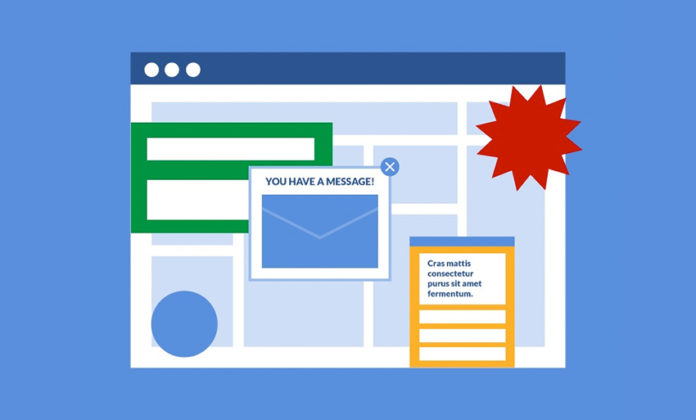In design, the concept of “the crystal goblet” explains that a glass should be made of a clear material in order to showcase the liquid that it holds. In other words, the best tools are those that let the content or the message shine through. When it comes to communicating with online customers in real-time, the tools we use should be “invisible” — this means that they are so easy to use that they allow us to focus on our message instead of on the tools themselves.
Most companies today use Live Chat as their primary means of real-time online communication with their customers. For most industries Live Chat is used as part of their customer service offerings. However, on some websites (particularly in the automotive industry) Live Chat is used for sales. There are several reasons that Live Chat should not be used for sales. But, if companies are going to use Live Chat for sales, the most important thing is to ensure they are not SPAMMING their customers.
5 Common Live Chat Spams
1. Aggressive Messaging
This is when you go to a website and less than 10 seconds after you arrive you see something moving or bouncing across the screen saying “HAVE A QUESTION? I CAN HELP!” This is kind of like parents texting their kids using ALL CAPS because they don’t understand that all caps means someone is YELLING AT YOU! Aside from the all caps, take a look at leading commerce websites across the internet: Amazon, eBay, Groupon, LivingSocial– do you see anything moving or bouncing around there?
![]()
2. Mechanical Pop-ups
When done incorrectly, automatically initiated chats are mechanical and spammy. Your customers are not cats chasing after a laser pointer, ie the chat box moving across the screen. Since these tactics have been around for over a decade, these boxes make your website feel outdated and unprofessional. When a customer does in fact want to speak with someone, they will be defensive because it seems as if the website has already tried to spam them.
3. Booby Trapped Chat Boxes
Misguiding a website visitor when they interact with your website engenders an immediate mistrust. Some businesses that are using chat for sales display a fake chat box (generally with an attractive stock photo) with a fake conversation or text box. When a visitor clicks the box, it disappears and an form for filling out information takes its place! So not only was the customer tricked to clicking in the box but now they are being asked to enter their name if they want to speak with someone (btw, try to use adsfasdf as a name and asdfasdf@asfasdf.com as an email address). Then, to top it off, when you click the box “Amanda” becomes Frank — deceiving a customer for the third time.
4. Unpredictable Video Greeters
Ever load up a new website and all of a sudden the website just starts talking to you? You A) rush to your mute button or B) close the website ASAP! One thing that has become somewhat popular in the “spammosphere” is talking website greeters. They are videos of people that are trying to get you to chat with “them” (we all know its not actually them). Look at the picture of the one below, it just seems very unnatural- almost like you’re going go get picked up from the airport by this guy.

5. Pop-Out Boxes
We are no longer in the 1990’s so I can’t understand how businesses think it is OK to have pop-outs be apart of their core website experience. This means that the chat box that the customer interacts with is not inside the site (think Gchat or Facebook chat) but instead it is another window that floats in front of the browser or is pushed to the background when the customer wants to browse the site’s content. Customers despise pop-outs so much that most browsers have automatic built in pop-out blockers, yet most chat companies somehow still think its appropriate to have pop-outs. Take a look at this picture below- the internet today should be much cleaner!

The Elegant Alternative
Online commerce communication should be all about honesty and tact. If someone is available to speak (and only if they really are) then definitely make it known (without the flashing lights and crazy movement). Don’t try to aggressively push the visitor into something they don’t want to do. Shoot for getting 80% of your website visitors to notice the option for live communication. As a rule of thumb, if at any point a customer wants to speak with you, they should see how. But, this does not mean you should bombard the option to 100% of your website visitors.
A few quick points on proactive engagement. Make sure you are only engaging high-value visitors and ensure that your (real) employees are ready to speak with those visitors. Some businesses actually outsource the people who speak with their customers on chat (see future posts on “managed chat”). Lastly, do not set mechanical popups to go off at pre-determined times for every visitor- do you enjoy when that happens?
If more than 50% of visitors close out of the pop-ups, then something has to be adjusted. Unfortunately most of the chat services in the automotive industry fit these spammy conditions. If you have a Live Chat pop-ups on your website you may already know how many visitors are clicking to chat but try this: Ask your chat provider for their data on the number of your website visitors that close the box and what is the average time it takes them to close it? If 70%+ of your visitors are closing your chat box within 1 minute of coming to your website than you have a major problem- your website is a SPAMMER!
To go back to the “crystal goblet” analogy at the beginning of this post, the tools that we use to communicate with our customer should be invisible. They should feel as natural as if we were speaking to the customer face-to-face. If your Live Chat is overcompensating then maybe its time for a more “invisible” alternative.






